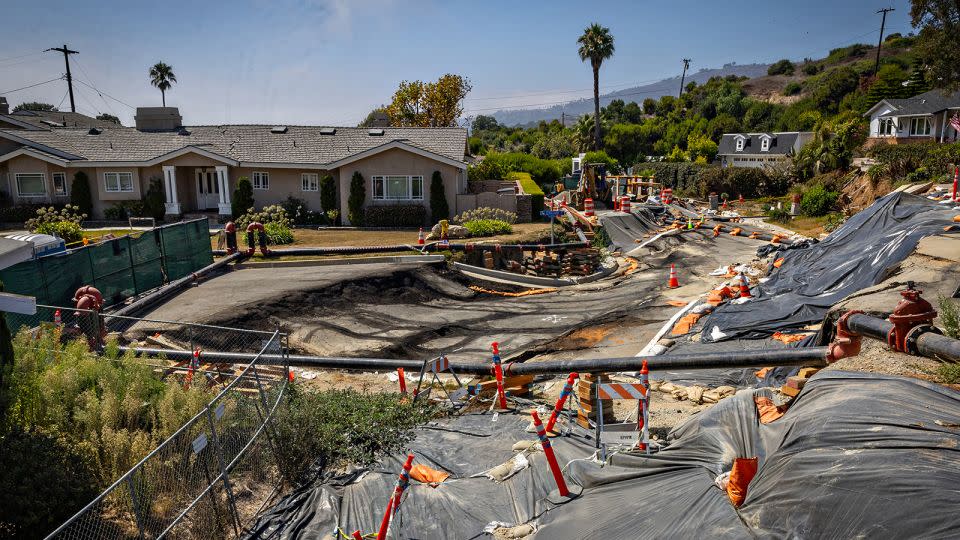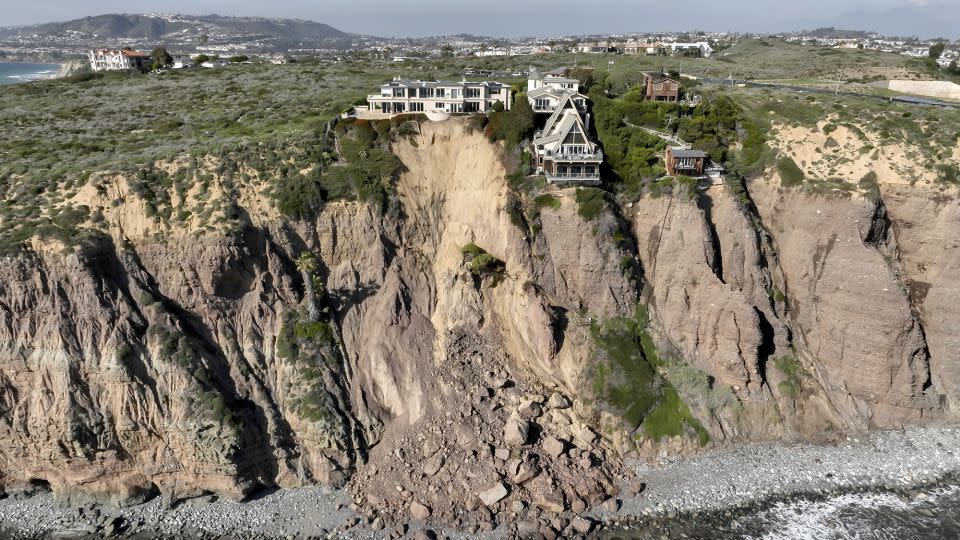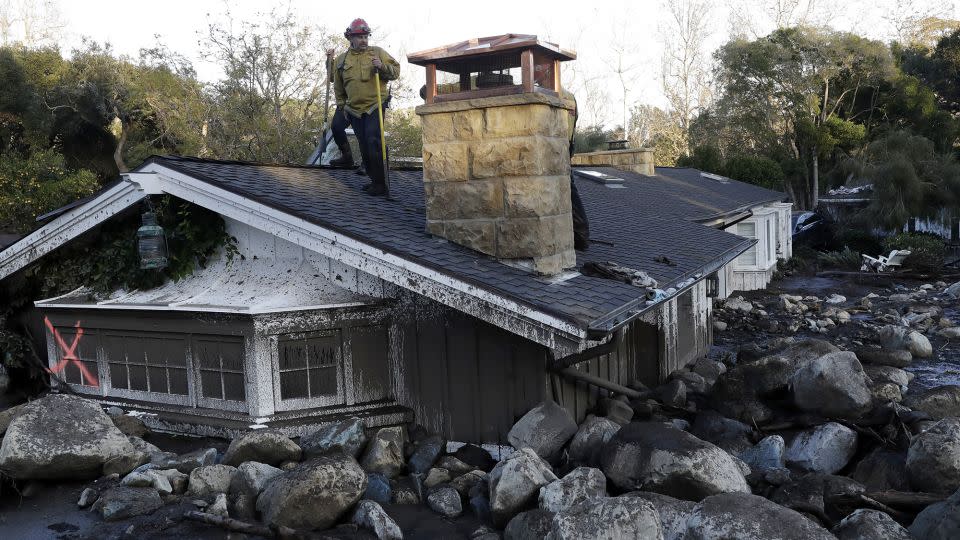Deep landslides beneath multimillion-dollar homes in Rancho Palos Verdes were moving at nearly glacial speed until they came to a halt.
This affluent coastal city in Southern California, about 30 miles south of Los Angeles, has long attracted people with its Pacific Ocean views and lush vegetation. But it sits atop a slow-moving landslide complex that has been active since the 1950s and causes landslides of about a few feet per year. Recently, after heavy winter rains, the pace and scale of the movement has increased.
The sharp acceleration experienced last weekend had devastating consequences.
Homes are now spread out unevenly on the uneven ground, roads have collapsed and more than 200 households are without power. On Tuesday, Governor Gavin Newsom declared a state of emergency in the city.
The sight of luxurious oceanfront homes dangling precariously from clifftops or partially swallowed underground is not uncommon in this part of the U.S. Landslides destroy homes, claim lives and leave communities fearful for their future.
But scientists warn that these events will become more frequent as the climate crisis reshapes landscapes with heavier rainfall and stronger storms.

Landslides depend on three factors: slope, rock type and climate, said Alexander Handwerger, a landslide scientist at NASA’s Jet Propulsion Laboratory.
Rancho Palos Verdes sits on a volcanic ash bed that formed about 10 to 15 million years ago and extends toward the Pacific coast.
“It has turned into a type of clay mineral that expands and becomes slippery when wet,” said Gary Griggs, professor of Earth and Planetary Sciences at the University of California, Santa Cruz.
Various factors trigger landslides, including earthquakes and human activities, but precipitation is one of the most common.
When it rains, water seeps into the soil and seeps into the layers below. There, it can reduce the suction and friction that hold soil or rock grains together, causing the ground to weaken and shift.
Dave Petley, an earth scientist at the University of Hull in England, said slopes are always trying to reach a stable angle, and that depends on the type of climate they’re in. If the climate changes and rainfall becomes more intense, the slope “may be too steep to be stable anymore, so it will have to have a landslide or a series of landslides to find a new, stable angle,” he told CNN.
The changing climate in California is forcing the geography to adapt.
For the past two years, atmospheric rivers — long columns of water in the sky from the tropics — have been bringing rain to the state.
In February, a river in Southern California dumped record amounts of rain, causing hundreds of landslides and killing at least nine people.
Rain has eroded the cliffs; one striking image shows a small cluster of mansions in Dana Point falling perilously close to the rubble-strewn beach below.


Scientists have found clear links between the climate crisis and heavier rain. A warmer atmosphere can hold more moisture, meaning heavier rain or snow when it falls, and warmer oceans cause stronger storms.
In California, climate projections show the state will experience less frequent but more intense rainfall in the future, primarily from atmospheric rivers that are expected to become stronger as the world warms.
The landslide risk is clear, said Handwerger, who is publishing a study on the subject in 2022. “We looked all over the state and saw that in years with more precipitation than average, landslides accelerate,” he said.
The climate crisis is also increasing other landslide risks. Sea level rise and storm surge are eroding cliffs. Hotter, drier summers are increasing the frequency and intensity of wildfires and leaving the landscape vulnerable to landslides, Griggs said.
The mudslide that hit Montecito in 2018, killing 23 people, followed the Thomas Fire, which was the largest wildfire in California history at the time and burned trees and vegetation.


Landslides are, of course, a global phenomenon, and scientists are identifying landslide risks triggered by climate change worldwide.
Cyclone Gabriel in New Zealand has caused more than 140,000 mapped landslides, with researchers estimating more than 800,000 in total.
A landslide triggered by heavy monsoon rains in the southern Indian state of Kerala in July killed at least 150 people. Rainfall has become at least 10% more intense due to the climate crisis, according to a scientific analysis.
Climate change is not the only factor that increases the likelihood of landslides; human behavior also has an impact.
Cutting down slopes to build houses or roads can weaken both slopes and mountain slopes, making both unstable, said Uğur Öztürk, a landslide scientist at the University of Potsdam and the GFZ German Research Centre for Geology.
Adding too much water to the soil can do the same thing, Griggs said. In Southern California, “people wanted to pretend they lived in the tropics,” he said, “and they planted a lot of landscapes that required a lot of irrigation.”
Deforestation is another factor. Tree and plant roots hold the soil together and uprooting them can destabilise the soil, says Petley, of the University of Hull.
But, he added, “Climate change is key.”
For residents of Rancho Palos Verdes, where the ground is moving at a rate of up to 12 inches a week, the future of their community is uncertain. It’s not clear when the movement will slow or if they can save their homes from falling apart.
For more CNN news and bulletins, create an account at CNN.com